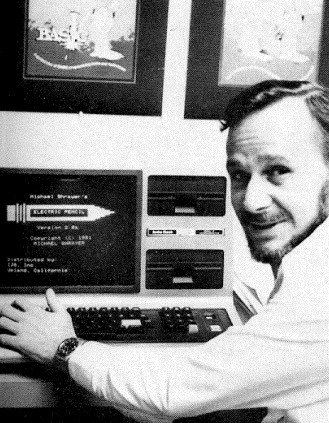- unknown (b.)
Bio/Description
In 1975, he was "semi-retired" from 20 years as a New York filmmaker, and had moved to California for a quieter life. Enjoying assembling electronic kits, he purchased and assembled a MITS Altair computer. Having never heard of a "word processor", he nonetheless believed that he should be able to use his computer, instead of a typewriter, to write documentation for his program. Thus he wrote another program?the first word processor for a microcomputer. What became known as Electric Pencil started when he made some improvements to an editor assembler package called Software Package 1 or SP-1. He named his improved version Extended Software Package 1 or ESP-1. ?Electric Pencil for the Altair? appeared in December 1976, and the version for the Sol-20 became especially popular. Most expected features were present in this software including find and replace and various formatting options but the application was text based. WYSIWYG was a still several years away. Electric Pencil was one of only five pieces of software inducted into the 80 Micro Hall of Fame in 1983, with the panel stating that Electric Pencil ?demonstrated conclusively that a TRS-80 could be used for serious word processing, and was the model for later word processors.? Fellow computer hobbyists wanted to buy the improved program, giving him an unexpected and lucrative new business. As no large network of computer stores existed, he formed Michael Shrayer Software Inc.; a decision he regretted, as naming the company after himself cost him his privacy. He advertised in computer magazines such as BYTE, and sold the program via mail order. Electric Pencil required 8K of memory and an Intel 8080 or Zilog Z-80 processor. As customers requested the program for their specific computers and operating systems he ported the word processor to each, resulting in 78 versions including the NorthStar Horizon and TRS-80. Electric Pencil might have continued to dominate the market had he continued to update it. Many imitators appeared, however, including WordStar and Magic Wand, both of which surpassed the original's popularity as he became bored with programming and sold its rights to others. Electric Pencil remained on the market into the 1980s, including a version for the IBM PC in 1983.
-
Gender:
Male -
Noted For:
Inventor of the Electric Pencil, the first word processor for home computers -
Category of Achievement:
-
More Info:


